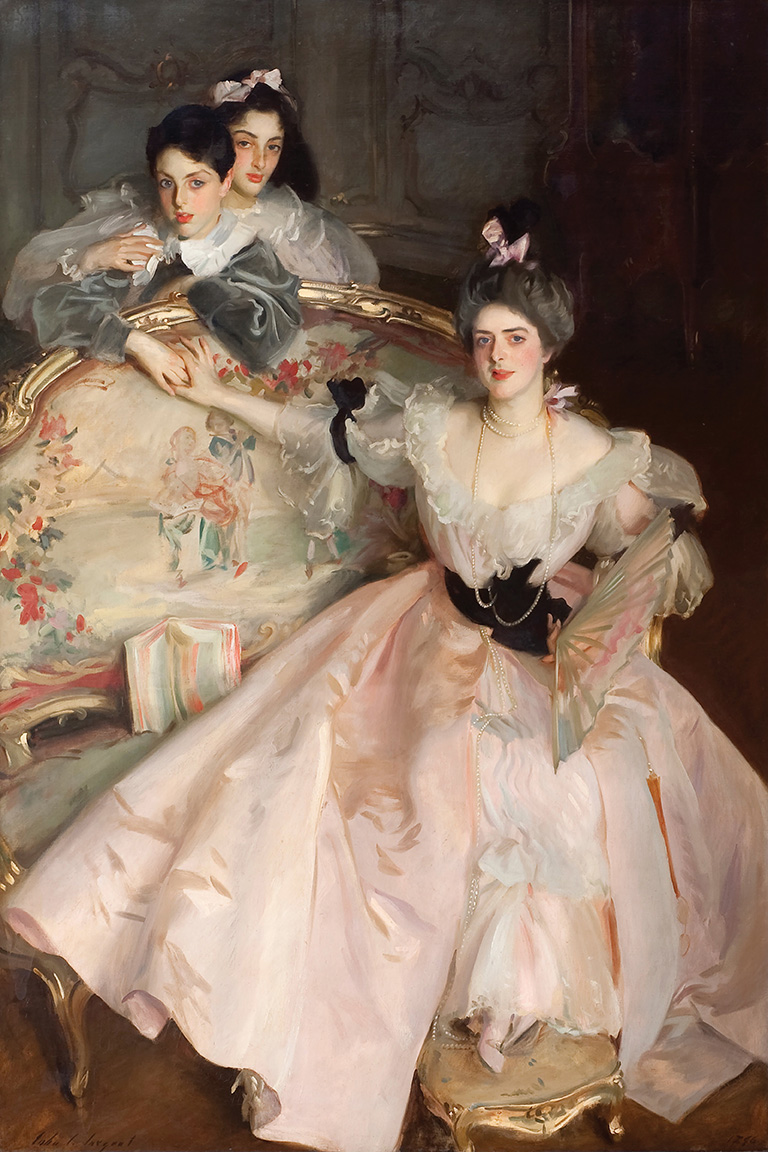By Stephanie L. Herdrich, Metropolitan Museum of Art
John Singer Sargent’s Mrs. Carl Meyer and Her Children, a dazzling display of fin-desiècle opulence and bravura painting, is the focus of a dossier exhibition this fall at New York’s Jewish Museum. The exhibition explores the sitter’s identity and life as a privileged Jew in late Victorian London and affords visitors a rare opportunity to admire a much-loved work by the celebrated painter.

Mrs. Carl Meyer and Her Children by John Singer Sargent, 1896. Tate, London.
Adèle Meyer was the wife of a prominent international banker, and a vivacious society hostess and philanthropist committed to progressive women’s issues. She shared a passion for the performing arts—theater, music, and opera—with Sargent. He admired the stylish, self-assured young matriarch and portrayed her, accompanied by her children Elsie and Frank, with a confident poise.
In his studio Sargent conjured a sumptuous domestic interior à la française in which every detail conveys the family’s wealth and position. The boiserie panels in the background, the ornate rococo settee, and the dainty footstool reflect the aesthetic sensibilities and aspirations of the patrons as well as the contemporary vogue for eighteenth-century French furniture and costume. Her gown, an airy confection of pink-peach changeant silk accented with velvet bows (possibly designed by the House of Worth, Paris), recalls those worn in portraits by Boucher or Fragonard, albeit with a modern twist.
Sargent references the past as he imparts a dynamic immediacy through his lively brushwork and the dramatic composition. Punch magazine famously parodied the painting’s high vantage point and tilted perspective as “a sort of drawing-room tobogganing exercise.” Some contemporary viewers found this inventive composition destabilizing: Adèle has just set aside her book and appears ready to emerge from the canvas, a stylish force in a rapidly changing British society—in which land ownership was no longer the sole measure of one’s wealth and status.

The Perils of Steep Perspective, illustration in Punch, May 8, 1897.
Amidst the extravagance, Sargent’s powerful technical virtuosity materializes: his signature brio; his remarkable economy of stroke; his ability to describe detail with the slightest, well-placed daub or swipe of pigment seem effortless. Observe the carefully placed dots of white paint that become the extravagant rope of pearls or the calligraphic strokes that emerge as the textile design of the settee. Perhaps the brilliance of the painting exists, in part, in the tension between opulence and economy.
When the painting was exhibited at the Royal Academy in 1897, Henry James celebrated Sargent’s bold confidence and the portrait’s powerful impact—aspects that resonate today. “Mr. Sargent has made a picture of a knock-down insolence of talent and truth of characterization,” he wrote, “a wonderful rendering of life, of manners, of aspects, of types, of textures, of everything.”

